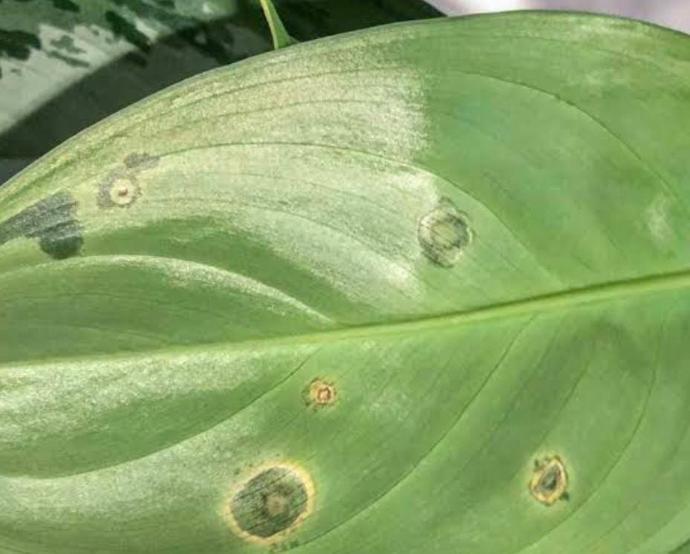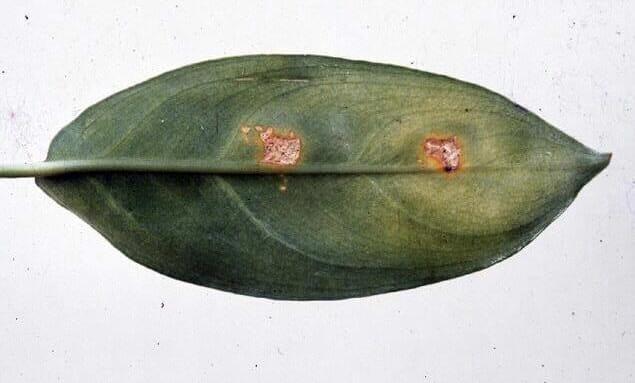Aglaonema Plant
Aglaonemas, herbaceous perennials with slow growth, thrive in well-drained soil and low to medium light. With high moisture needs, they are popular as indoor ornamental
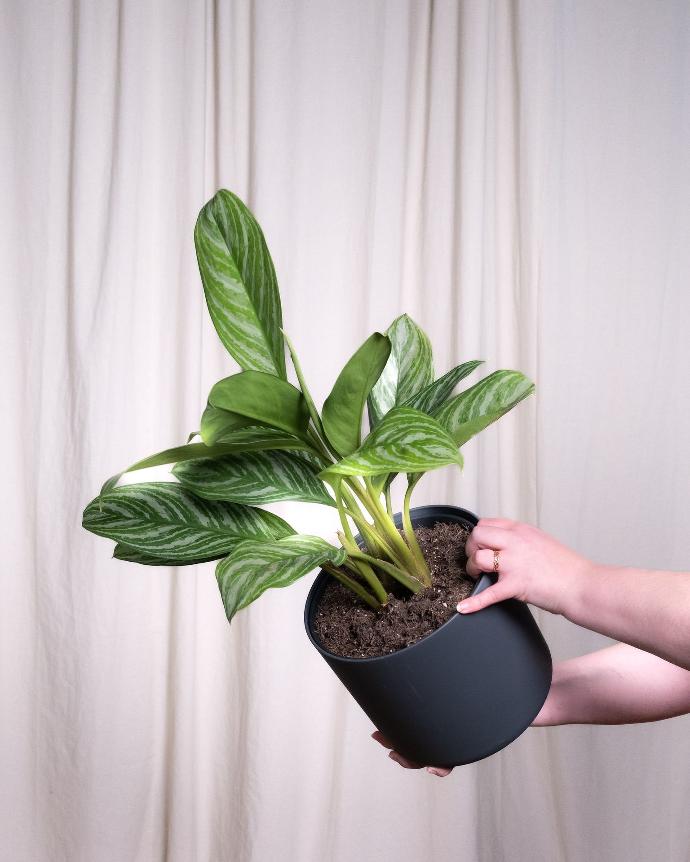
Habit
Herbaceous Perennial
Height
1-3 ft
Growth
Slow
Soil
Well Drained
Shade
Low to Medium Light
Moisture
High
Edible
No
Medicinal
Yes
Origin
Asia
Climatic Condition
Tropical, Humid
Temperature (°)
18-30°C
Humidity (%)
60-85%
Potting media
Peat+Soil
Fertilizers
Balanced NPK(10:10:10)
Watering
Moderate, Keep Moist
Plant Weight
300-600 g
Flowering Time
Rarely Flowers
Soil Ph level
5.5-6.5
Water Ph level
6.0-7.0
Soil EC
1-2 dS/m
Yield Per Plant
NPK ratio
10:10:10
life Span
8-12 yrs
Health Benefits
Suggested Grow Media or Potting Mix ?
40% peat, 30% perlite, 30% compost
Suggested Fertigation/Fertilizers
Fertilize every 2-4 weeks with a balanced, water-soluble fertilizer.
Common Diseases and Remedies
Anthracnose , Bacterial leaf spot
Circular to oval brown leaf spots having an yellow hallow , Spots became irregular in shape .
Pruning , remove infected leaves .
What Is An Aglaonema ?
Aglaonema, commonly known as Chinese Dieffenbachia, is a genus of flowering plants native to tropical and subtropical Asia. These plants are prized for their lush, colourful leaves and are popular as indoor plants. They belong to the Snake family, which also includes other famous plants such as the philodendron and the peace lily. Aglaonema plants have broad, lance-shaped leaves that often come in attractive patterns or variegated colours in various shades of green, silver, red, pink and sweet. They are low maintenance and can thrive in low to medium light, making them ideal for indoor environments. Geraniums are grown for their leaves rather than their flowers, but they also sometimes produce small, inconspicuous flowers. Because of their versatility and beauty, Aglaonema plants are a popular choice for adding greenery and colour to homes, offices and interiors. They also have air purifying properties that help improve indoor air quality by eliminating toxins such as formaldehyde and benzene.
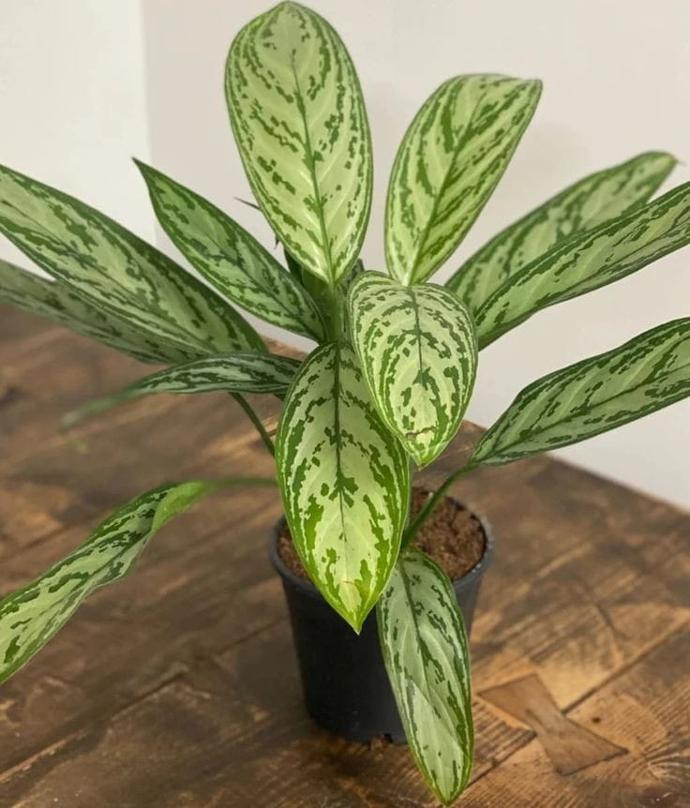
What Are The Different Types Of Aglaonema Plants?
1. Aglaonema 'Chinese Dieffenbachia'
A classic species with green leaves and silver markings, perfect for beginners.
2. Aglaonema 'Emerald Beauty'
Displays dark green leaves with silver and shiny markings.
3. Aglaonema 'White Calcite'
It has white and green variegated leaves, creating a light and airy appearance.
4. Aglaonema 'Cutlass'
Known for its long, narrow leaves with green and silver markings.
5. Aglaonema 'Silver Queen'
Known for its grey-green leaves with dark green edges.
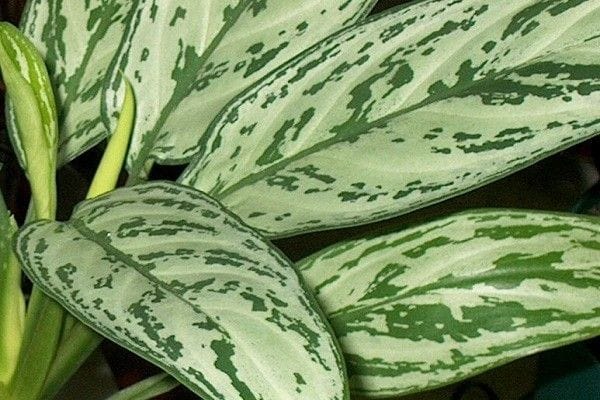
How to Care for Aglaonema Plants ?
1. Location
Aglaonema plants are often grown as indoor ornamentals and are prized for their lush foliage and adaptability to indoor environments. They rely on constant indoor conditions such as temperature and filtered light. It's ideal to place them near a window with direct sunlight or in a well-lit area of the home. In general, Aglaonema plants are best for indoor environments where light, temperature and humidity needs can be more easily controlled and maintained.
2. Sunshine
Aglaonema plants like bright, indirect sunlight. They can tolerate low light but grow best in areas with filtered or indirect sunlight. Direct sun can scorch their leaves, so leaving them in direct sunlight for long periods of time should be avoided. Placing it near a curtained window or in a good location where sunlight is filtered by trees or other structures is good for keeping its leaves healthy and strong.
3. Soil
Aglaonema plants prefer well-drained peat potting soil. A good Aglaonema potting mix should provide adequate aeration and moisture retention, as well as allowing excess water to drain away easily. A compost mix may include ingredients such as peat moss, perlite, and compost. Avoid heavy or compacted soil that can allow water to enter, as the aglaonema plant is susceptible to root rot if its roots are constantly wet. Repotting regularly every few years can help refresh the soil and increase the growth of your lily plant.
4. Hydration
Proper watering is very important for the health of your Aglaonema plants. Keep the soil moist at all times but not waterlogged. Water thoroughly when an inch of soil is dry, but do not allow the soil to completely dry out of water.
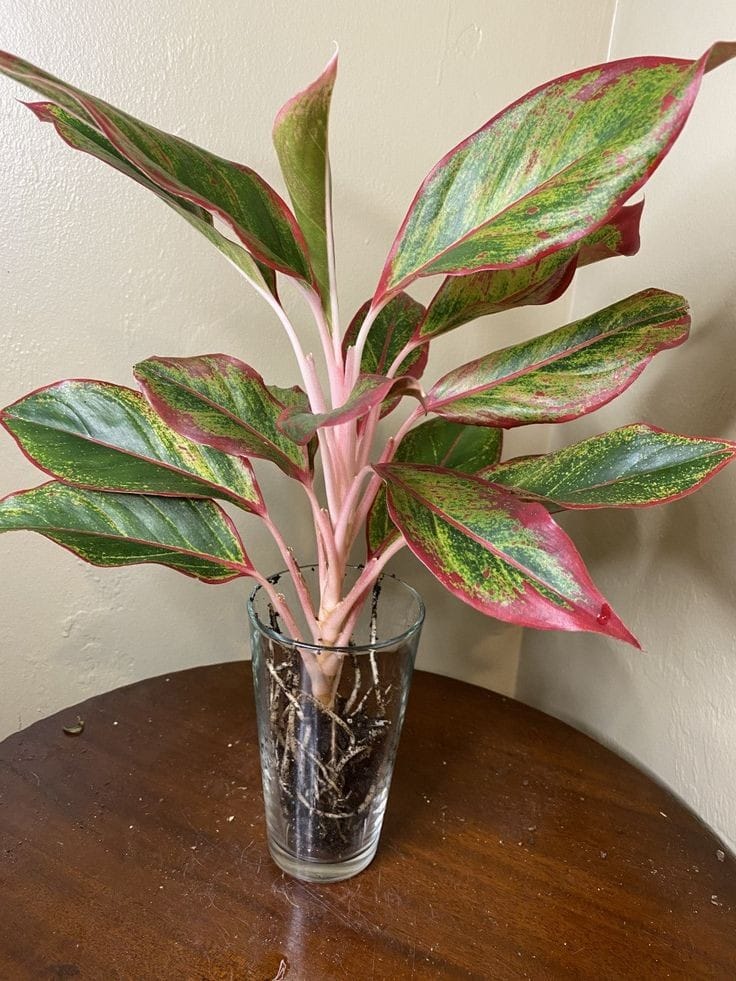
5. Nourishment
The ideal NPK (nitrogen, phosphorus, potassium) ratio in fertilizing cactus plants is generally a balance such as the 10-10-10 or 20-20-20 formula. However, the fertilizer should be diluted by half to avoid over-fertilization, because the aglaonema plant is sensitive to fertilizer concentration. You can fertilize your Aglaonema plants every 4-6 weeks during the spring and summer growing season. Reduce or stop fertilizing during fall and winter when plant growth is slow. In addition to NPK, Aglaonema plants can also benefit from micronutrients such as iron, magnesium and calcium, which are often included in balanced fertilizers. Be sure to follow the directions on the fertilizer package and avoid overfertilizing, as too many nutrients can cause the fertilizer to burn and damage plants.
6. Issues
Aglaonema plants are low maintenance but can still experience some problems. Here are some things to remember.
This may be caused by overwatering, flooding, or direct sunlight. Adjust your watering habits to make sure your plants don't get too much or too little light. Usually a sign of dry weather or inconsistent watering. Increase the humidity around your plant by regularly misting the leaves with water or placing the humidifier nearby. Be sure to water thoroughly to keep the soil moist. Aglaonema plants can be affected by pests such as spider mites, mealybugs and beetles. Check your plants regularly for signs of pests such as leaf spots, sticky spots or small insects. Treat disease immediately with insecticide or hazelnut oil. Excessive water or poor soil causes root rot. Make sure the plant is potted in well-drained soil so excess water can drain away from the roots. Correct poor watering habits to prevent water from seeping into the soil. Fungal diseases such as leaf spot or mould disease may develop in Dieffenbachia plants, especially in wet soil or if the leaves remain wet for a long time. Improve air circulation of plants and do not water at high pressure. Use antibiotics as needed to treat fungal infections.
What are the Benefits of Aglaonema Plants ?
Aglaonema plants have many advantages that make them a great choice for indoors: Like many indoor plants, Dieffenbachia plants can help improve indoor air quality by removing toxins, organic compounds (VOCs) such as formaldehyde, benzene, and other pollutants from the air. This will help create a healthy home environment. Aglaonema plants are easy to care for and can tolerate many indoor conditions, including low light and occasional neglect. It's a good choice for beginners or people with busy lives. With their lush foliage and beautiful leaf patterns, Aglaonema plants add a touch of beauty and greenery to interior spaces. They are available in many colours and varieties, allowing you to choose the perfect plant to complement your decor. Research shows that adding plants to a work or study environment can increase productivity, focus, and creativity. Cactus plants can create a more beautiful and comfortable environment for working or studying. In general, Aglaonema plants are both beautiful and functional; making them a valuable addition to homes, offices and interiors.
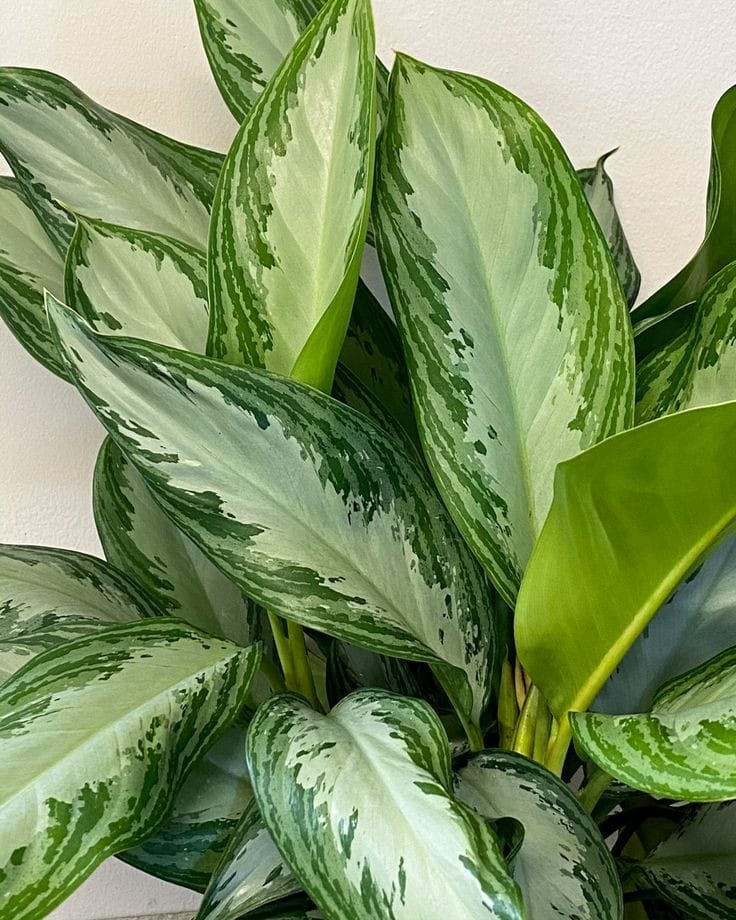
FAQs About Growing Aglaonema
1. How to Treat Aglaonema Plants?
Aglaonema plant care has many important aspects to ensure its health and longevity. Here are some tips for caring for your Aglaonema plant: Place the plant in a location that receives indirect light. Avoid direct sunlight as it can burn the leaves. Aglaonema plants can tolerate low light but grow best in medium to indirect light. Keep the soil constantly moist but do not allow too much water. Water the plants when the top soil feels dry to the touch. Provide proper drainage to prevent standing water, which can cause root rot. Aglaonema plants enjoy medium to high humidity. Increase humidity by watering the leaves regularly or placing a bowl filled with water and pebbles near the plant. Store at 65-80°F (18-27°C). Do not expose the plant to cold weather or extreme temperatures. Remove visible yellow, brown or damaged leaves. Pruning can also help maintain the plant's shape and size. Repot every few years or when the plant outgrows its current pot. Use a pot that is smaller than your current pot and use fresh, well-drained potting soil. By following these care tips you can keep your Aglaonema plants healthy, strong and successful for years to come.
2. what are the uses of Aglaonema plant ?
Like many indoor plants, Dieffenbachia plants contain formaldehyde, benzene, etc. It can help improve indoor air quality by removing toxins such as volatile organic compounds (VOCs) from the air. This makes them more useful for home, office and interiors. With their lush foliage and attractive leaves, Aglaonema plants add beauty and greenery to the indoor environment. They come in a variety of colours and styles to complement any decorating style. Research shows that spending time around indoor plants like Dieffenbachia can have positive effects on mood and health. Taking care of plants and surrounding yourself with greenery can promote relaxation, reduce stress, and create a pleasant atmosphere at home or work. In the practice of Feng Shui, certain plants, including Aglaonema, are believed to bring good energy and luck to the home or office. According to Feng Shui principles, placing Dieffenbachia plants in specific areas of your home or office will help promote harmony and balance. In general, although the main purpose of Aglaonema plants is decoration, they also provide additional benefits such as purifying the air and calming the mind, making them more useful for interiors.
3. Can I plant Aglaonema plant at home?
Yes, Dieffenbachia plants are perfect for growing indoors and are often grown as indoor ornamentals. In fact, they are often grown indoors because they can thrive in indoor conditions. The indoor environment provides Aglaonema plants with the right warmth, protection from harsh weather, and the filtered or indirect sunlight they love. They can adapt to poor lighting conditions and are suitable for many areas of the home or office where natural light may be limited. To grow Aglaonema at home, remember to provide the plant with sufficient light, proper watering, proper humidity and regular fertilization. With proper care, your Aglaonema plant can thrive and add beauty to your indoor space.
4. What is the best pot for Aglaonema planting area?
When choosing a pot for planting the Aglaonema plant, features such as water, size and material should be taken into consideration. Here are some tips for choosing the best flowers. Choose a pot with a hole in the bottom so that excess water can drain out freely. Proper drainage is important to prevent waterlogging, which can cause root rot. Choose a pot with enough room for the plant's roots to grow. Aglaonema plants prefer easier pots, so choose a pot that is 1-2 inches larger than the plant's current pot. Do not use pots that are too large because too much soil can hold too much water and cause overwatering. Consider using a pot made of a breathable material such as terracotta or ceramic, which allows air to circulate between the roots and helps protect the soil from waterlogging. This material also provides stability to the plant and helps retain moisture. Choose a tree that complements your decor and personal style. Available in a variety of colours, shapes and designs to suit your taste. In general, choose a pot that provides adequate water, has enough room for the roots to grow, and enhances the beauty of your interior. With the right pot, your Dieffenbachia plant can thrive and add beauty to your home or office.
5. Where can I buy Aglaonema plants?
You can buy Aglaonema plants online and offline from many places. Here are some options. Look for local plant stores or stores in your area that specialize in plants. These stores often carry a variety of plants, including many unique varieties of Aglaonema. Plant Fair or Farmers Market. Attend a plant fair, farmers market or garden fair in your area; You can find vendors selling Aglaonema plants as well as other plants in home and garden supplies.
